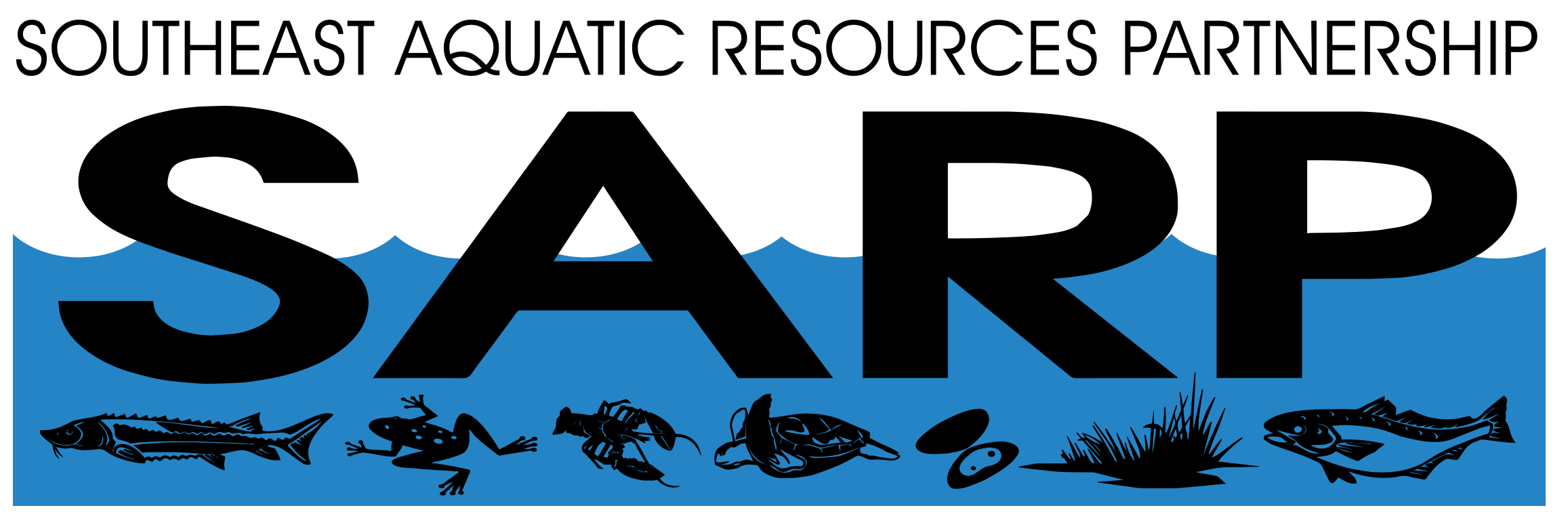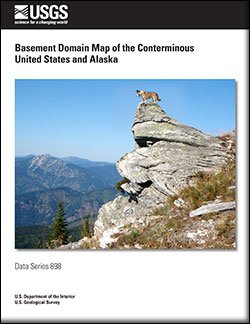Filters: Types: OGC WMS Layer (X)
56,232 results (92ms)|
Filters
Date Range
Extensions Types
Contacts
Categories Tag Types
|

This folder contains data contributed to the National Fish Habitat Partnership (NFHP) Data System by the Southeast Aquatic Resources Partnership (SARP). SARP was recognized as a partner of NFHP in October 2007.

Description of Work U.S. Geological Survey (USGS) is identifying the types and locations of emerging and legacy toxic contaminants in the water and sediments at 59 major tributaries to the Great Lakes (including many Area of Concern sites). This information is needed to help prioritize watersheds for restoration, develop strategies to reduce contaminants, and measure the success of those efforts in meeting restoration goals. The USGS contaminant and virus tributary monitoring network follows the National Monitoring Network for Coastal Waters design. The monitoring effort includes collecting emerging contaminant samples at 17 sites, a subset of the 30 nutrient monitoring sites; and for human viruses and other waterborne...
Categories: Project;
Types: Map Service,
OGC WFS Layer,
OGC WMS Layer,
OGC WMS Service;
Tags: Emerging contaminants,
GLRI,
Great Lakes Restoration Initiative,
Great Lakes Restoration Initiative,
Great Lakes Tributaries,

Description of Work Benthos (benthic invertebrate) and plankton (phytoplankton/zooplankton) communities in Wisconsin's four Lake Michigan Areas of Concern (AOCs; Menominee River, Lower Green Bay and Fox River, Sheboygan River, and Milwaukee Estuary) and six non-AOCs will be quantified. The inclusion of non-AOC sites will allow comparison of AOC sites to relatively-unimpacted or less-impacted control sites with natural physical and chemical characteristics that are as close as possible to that of the AOCs. The community data within and between the AOCs and non-AOCs will be analyzed. This project is a cooperative agreement between the Wisconsin Department of Natural Resources (WDNR) and the US Geological Survey (USGS)....
Categories: Project;
Types: Map Service,
OGC WFS Layer,
OGC WMS Layer,
OGC WMS Service;
Tags: AOC,
Areas of concern,
Beneficial use impairment,
Ecosystem health,
Fox River,

Description of Work USGS will conduct seasonal sampling of benthic invertebrates, zooplankton, prey fish, and their diets to complement the seasonal lower trophic level sampling by EPA. A point of emphasis is describing the vertical distribution of planktivores and their zooplankton prey, to fill a knowledge gap on these predator/prey interactions. These data will provide a more holistic understanding of how invasive-driven, food-web changes could be altering energy available to sport fishes in the Great Lakes and used to build bioenergetics models that can evaluate whether zooplankton dynamics are being driven by limited resources or excessive predation. Understanding the key drivers of zooplankton will provide...
Categories: Project;
Types: Map Service,
OGC WFS Layer,
OGC WMS Layer,
OGC WMS Service;
Tags: Accountability,
CSMI,
Ecosystem health,
Energy transfer,
Fish production,
This shapefile contains landscape factors representing human disturbances summarized to local and network catchments of river reaches for the Desert Fish Habitat Partnership. This dataset is the result of clipping the feature class 'NFHAP 2010 HCI Scores and Human Disturbance Data for the Conterminous United States linked to NHDPLUSV1.gdb' to the boundary of the Desert Fish Habitat Partnership. Landscape factors include land uses, population density, roads, dams, mines, and point-source pollution sites. The source datasets that were compiled and attributed to catchments were identified as being: (1) meaningful for assessing fish habitat; (2) consistent across the entire study area in the way that they were assembled;...
Categories: Data;
Types: ArcGIS REST Map Service,
Downloadable,
Map Service,
OGC WFS Layer,
OGC WMS Layer,
Shapefile;
Tags: Anthropogenic factors,
Aquatic habitats,
Atlantic Coast FHP,
Catchment areas,
Connecticut,
Alternate IDs: 323326114482601 C-10-25 15DAC1 Organization: USGS Data: Water Level - Tapedown Water Level - Transducer Specific Conductance Temperature Coordinate (approximate; UTM 11N): 3604326 N 705875 E
Alternate IDs: 323825114460301 C-09-24 18CCD1 Agency: USGS Reclamation Data: Water Level - Tapedown Water Level - Transducer Temperature Specific Conductance Gravity Coordinate (approximate; UTM 11N): 3613602 N 709406 E
Alternate IDs: 323006114483901 C-11-25 03ACC1 Organization: USGS Reclamation Data: Water Level - Discrete Water Level - Continuous Gravity Specific Conductance Temperature Coordinate (approximate; UTM 11N): 3598151 N 705672 E Notes: Piezometer was dry at the start of the pulse flow. Only about 7 weeks of data were collected before the piezometer returned to dry conditions.
The Interior River Lowland is made up of many wide, flat-bottomed terraced valleys, forested valley slopes, and dissected glacial till plains. In contrast to the generally rolling to slightly irregular plains in adjacent ecological regions to the north (54), east (55) and west (40, 47), where most of the land is cultivated for corn and soybeans, a little less than half of this area is in cropland, about 30 percent is in pasture, and the remainder is in forest. Bottomland deciduous forests and swamp forests were common on wet lowland sites, with mixed oak and oak-hickory forests on uplands. Paleozoic sedimentary rock is typical and coal mining occurs in several areas.
Similar to the Northeastern Highlands (58), the Northeastern Coastal Zone contains relatively nutrient poor soils and concentrations of continental glacial lakes, some of which are sensitive to acidification; however, this ecoregion contains considerably less surface irregularity and much greater concentrations of human population. Landforms in the region include irregular plains, and plains with high hills. Appalachian oak forests and northeastern oak-pine forests are the natural vegetation types. Although attempts were made to farm much of the Northeastern Coastal Zone after the region was settled by Europeans, land use now mainly consists of forests, woodlands, and urban and suburban development, with only some...
Stretching from Kentucky to Alabama, these open low mountains contain a mosaic of forest and woodland with some cropland and pasture. The eastern boundary of the ecoregion, along the more abrupt escarpment where it meets the Ridge and Valley (67), is relatively smooth and only slightly notched by small, eastward flowing streams. Much of the western boundary, next to the Interior Plateau (71), is more crenulated, with a rougher escarpment that is more deeply incised. The mixed mesophytic forest is restricted mostly to the deeper ravines and escarpment slopes, and the upland forests are dominated by mixed oaks with shortleaf pine. Ecoregion 68 has less agriculture than the adjacent Ecoregion 71. Coal mining occurs...
This physically and biologically diverse ecoregion covers the highly dissected ridges, foothills, and valleys of the Klamath and Siskiyou mountains. It also extends south in California to include the mixed conifer and montane hardwood forests that occur
The Northern Basin and Range consists of dissected lava plains, rocky uplands, valleys, alluvial fans, and scattered mountain ranges. Overall, it is cooler and has more available moisture than the Central Basin and Range (13) to the south. Ecoregion 80 is higher and cooler than the Snake River Plain (12) to the northeast in Idaho. Valleys support sagebrush steppe or saltbush vegetation. Cool season grasses, such as Idaho fescue and bluebunch wheatgrass are more common than in Ecoregion 13 to the south. Mollisols are also more common than in the hotter and drier basins of the Central Basin and Range (13) where Aridisols support sagebrush, shadscale, and greasewood. Juniper woodlands occur on rugged, stony uplands....
This mostly forested region, with dense concentrations of continental glacial lakes, is less rugged than the Northeastern Highlands (58) to the west and considerably less populated than Ecoregion 59 to the south. Vegetation here is mostly spruce-fir on the lowlands with some patches of maple, beech, and birch on the hills. Soils are predominantly frigid Spodosols. By contrast, the forests in the Northeastern Coastal Zone (59) to the south are mostly Appalacian oak or northeastern oak-pine and the soils are generally mesic Inceptisols and Entisols.
This dataset represents the variety (unique structural classes: water, bare, herbaceous, short shrubs, medium shrubs, short trees, tall trees) within 1 ha of bottomland areas. Traditional image interpretation cues were used to develop the polygons, such as shape, size, pattern, tone, texture, color, and shadow, from high resolution, true color, aerial imagery (0.3m resolution), acquired for the project. Additional, public available aerial photos (NAIP, 2011) were used to cross-reference cover classes. As with any digital layer, this layer is a representation of what is actually occurring on the ground. Errors are inherent in any interpretation of ground qualities. Due to the "snapshot" nature of the aerial photos,...
Categories: Data;
Types: Citation,
Downloadable,
Map Service,
OGC WFS Layer,
OGC WMS Layer,
Shapefile;
Tags: Arches National Park,
Canyonlands National Park,
Colorado River,
Grand County,
Moab,
This data set describes the predicted daily climate (temperature and rainfall) for low, mid, and high-elevations on Mona Loa, Island of Hawaii from 2098-2100. Climate predictions are based on 3 alternative climate scenarios (RCP 4.5, A1B, and RCP 8.5) - see Liao et al. 2015 for more details and climate references. The predicted daily risk of susceptible Hawaiian honeycreepers are based on the daily climate data, mosquito abundance and other factors. Also see Samuel et al. 2011 The dynamics, transmission, and population impacts of avian malaria in native Hawaiian birds: a modeling approach. Ecological Applications 21:2960-2973 for description of the epidemiological model used for avian malaria risk predictions.
Categories: Data;
Types: Citation,
Map Service,
OGC WFS Layer,
OGC WMS Layer,
OGC WMS Service;
Tags: Birds,
Culex mosquitoes,
Downscaled climate models,
Hawaiian honeycreepers,
Mona Loa,
Great Basin and the Snake River Plain segments from the physiographic province boundary data.
Types: Map Service,
OGC WFS Layer,
OGC WMS Layer,
OGC WMS Service;
Tags: Basin and Range,
physiographic provinces
Similar to other ecoregions in central and southern California, the Southern California Mountains have a Mediterranean climate of hot dry summers and moist cool winters. Although Mediterranean types of vegetation such as chaparral and oak woodlands predominate in this region, the elevations are considerably higher, the summers are slightly cooler, and precipitation amounts are greater than in adjacent ecoregions, resulting in denser vegetation and some large areas of coniferous woodlands. In parts of the Transverse Range, a general slope effect causes distinct ecological differences. The south-facing slopes typically have higher precipitation (30-40 inches) compared to many of the north slopes of the range (15-20...

Categories: Publication;
Types: Citation,
Map Service,
OGC WFS Layer,
OGC WMS Layer,
OGC WMS Service;
Tags: Data Series
|

|